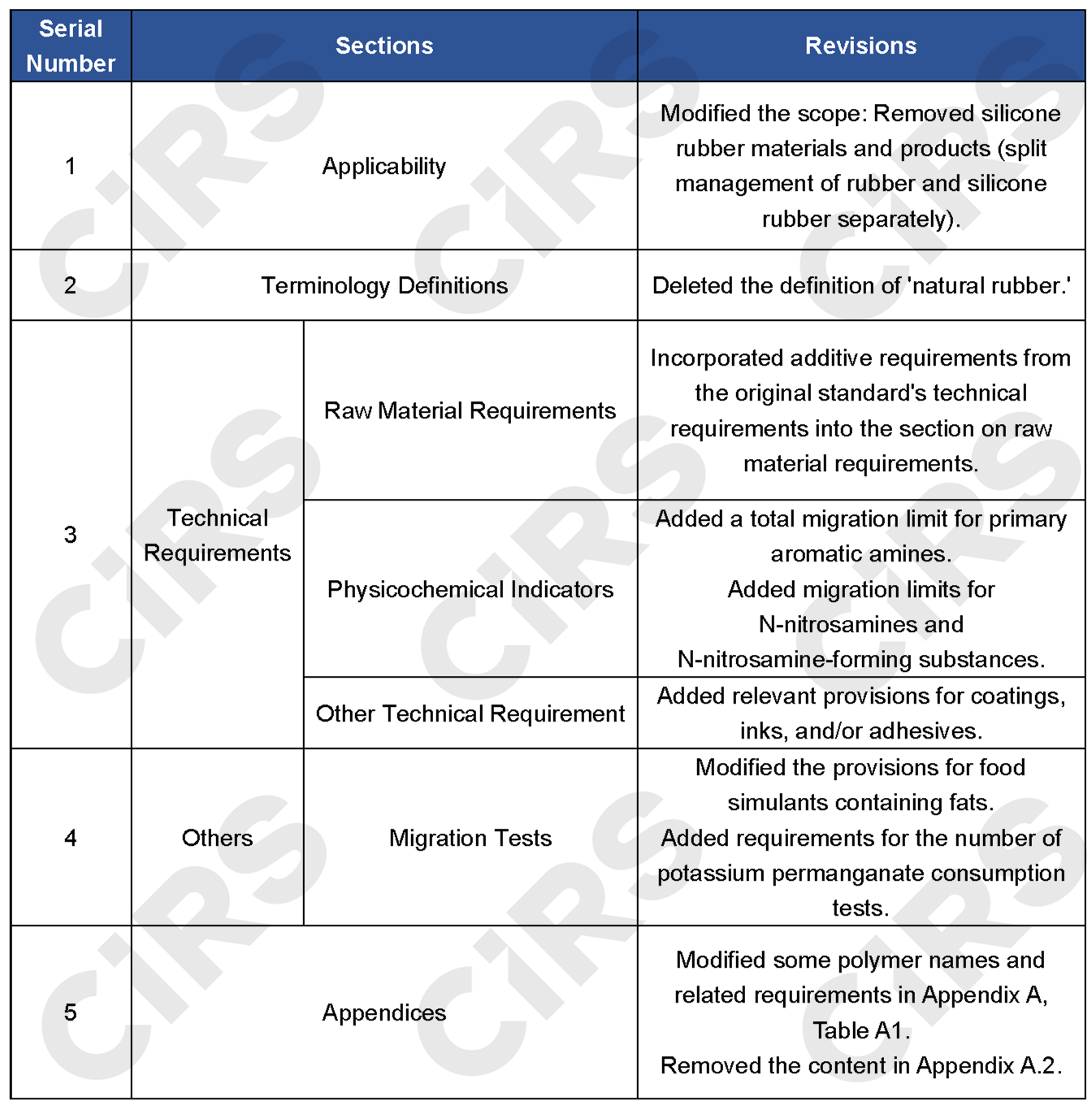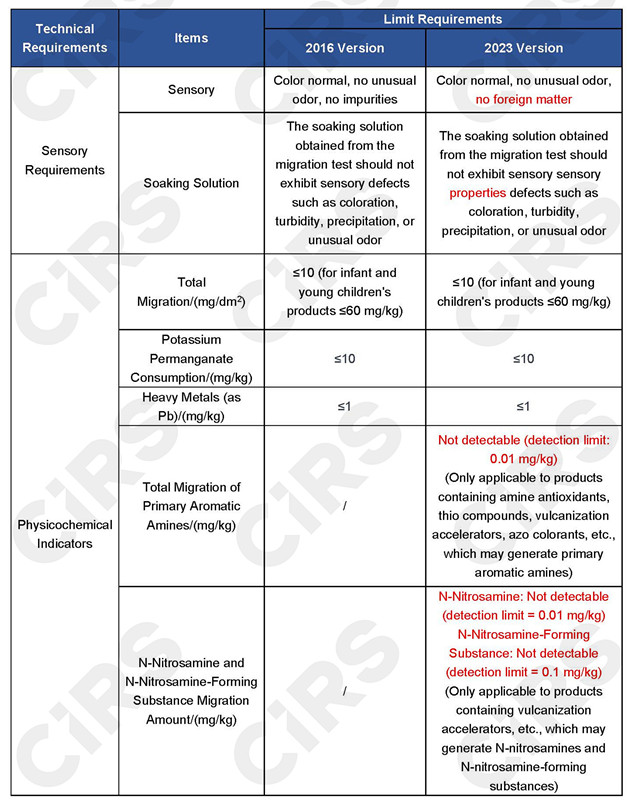On September 25, 2023, the National Health Commission released 85 national food safety standards and 3 amendment notices (NHC Announcement No. 6 of 2023), including 17 standards related to food contact materials, comprising 5 product standards (plastics, metals, rubber, composite materials, inks) and 12 method standards (migration general principles, method validation general principles, specific migration quantity test methods, etc.)."
This article will introduce GB 4806.11-2023 'National Food Safety Standard - Rubber Materials and Products for Food Contact' (hereinafter referred to as the 'Rubber Standard'), which will officially take effect on September 6, 2024.
Comparing the 2023 edition with the 2016 edition, the main changes are summarized as follows:
Table 1: Key Revisions of GB 4806.11-2023 New Standard

Key Points of Concern
As mentioned above, there are significant changes in the technical requirements between the old and new rubber standards, involving physicochemical indicator requirements. A comparison of technical requirements between the old and new standards is shown in Table 2.
Table 2: Comparison of Technical Requirements between GB 4806.11 New and Old Standards*

*The items listed in the table do not cover specific migration limits and other physicochemical indicators.
CIRS C&K Testing Reminder
A: Pay attention to changes in applicability and material classification.
Due to differences in the structural characteristics, production processes, and other aspects of rubber and silicone rubber, they are currently managed separately. This revision only pertains to the rubber section of the original standard. From the date of implementation of this standard, the rubber section in GB 4806.11-2016 will be replaced, while the silicone rubber section will remain in effect. Enterprises are reminded to select the appropriate product standard based on the material used.
B: Pay attention to compliance with raw materials.
In this revision, significant adjustments have been made to the list of raw materials. Apart from editorial revisions, the main changes are as follows:
- Adopting a management mode combining polymers with monomers/initiators has expanded the range of authorized raw materials while ensuring food safety.
- Newly added basic raw materials for authorized use meet the increasing industry demands while ensuring safety.
C: Pay attention to changes in physicochemical indicators.
Considering the possibility of introducing substances harmful to human health in the rubber production process, this revision introduces two common physicochemical indicators: total migration of primary aromatic amines and migration of N-nitrosamines and N-nitrosamine-forming substances for rubber products containing specific additives. Regarding this change, the industry should pay special attention to the following two points:
Compliance declarations regarding whether materials containing substances that may produce primary aromatic amines or N-nitrosamines and N-nitrosamine-forming substances have been used should be effectively communicated up and down the supply chain, enabling downstream parties to better conduct compliance assessment and management.
This provision does not imply that all amine antioxidants, azo colorants, or vulcanization accelerators can be used; the use of additives still needs to meet the requirements of GB 9685 and related announcements.
CIRS C&K Testing has the complete set of technical testing capabilities for the new version of the standard, including total migration of primary aromatic amines and migration of N-nitrosamines and N-nitrosamine-forming substances. If you need any assistance or have any questions, please get in touch with us via test@cirs-group.com.
Further Information
